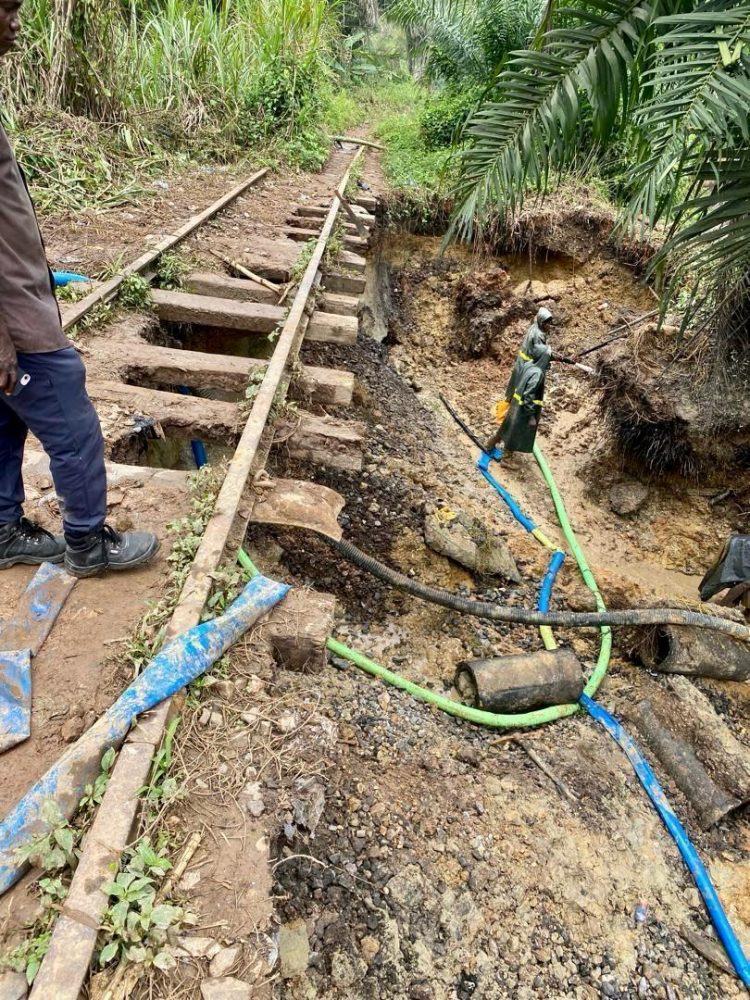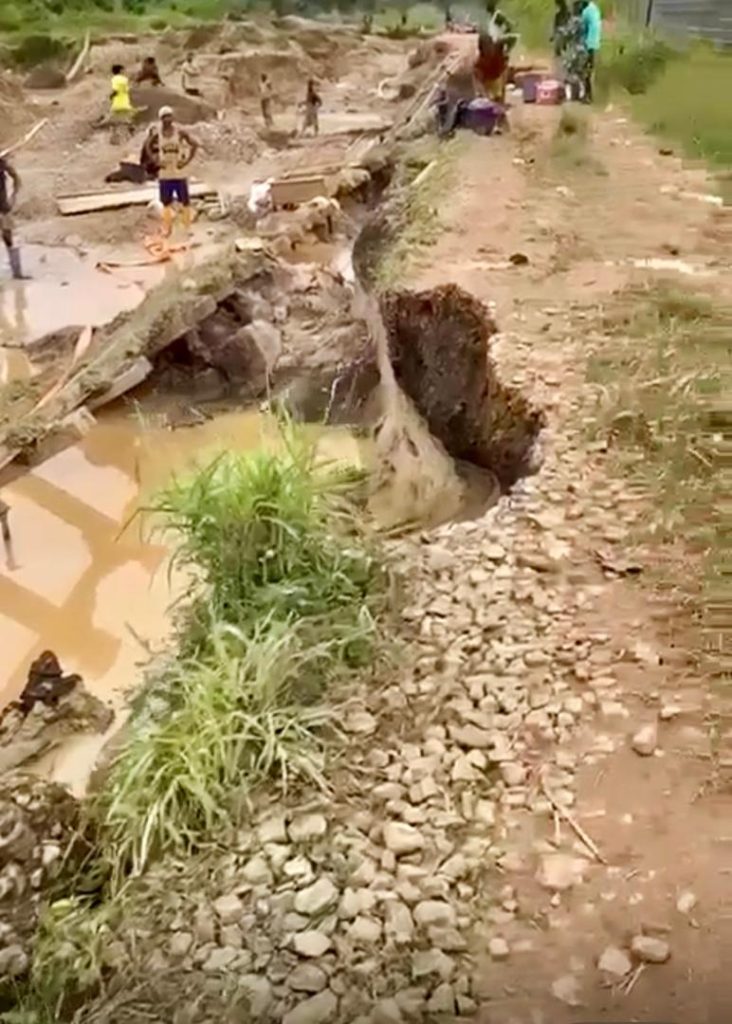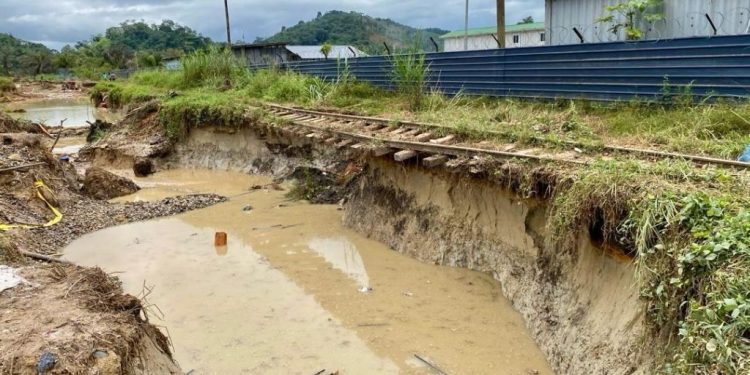The once-promising Bonsawere railway line has suffered severe destruction due to illegal mining activities, popularly known as galamsey, after years of abandonment and neglect in the Tarkwa-Nsuaem Municipality.
The railway line, which once served as a crucial transport route for both passengers and goods, now lies in ruins as miners have encroached on the area, digging deep pits and washing away the supporting soil structure.
Residents of Bonsawere and nearby communities have expressed concern over the growing damage, describing the situation as both dangerous and disheartening.
Large portions of the track have caved in, with several sections submerged in mining pits filled with stagnant, polluted water.

Locals fear that if the destruction continues, it could lead to more severe environmental consequences, including the collapse of surrounding lands and contamination of nearby water bodies.
According to eyewitnesses, the illegal miners began operations along the disused line several years ago, taking advantage of the government’s apparent disinterest in maintaining the infrastructure.
Environmental experts have also warned that the destruction of the Bonsawere line is part of a larger pattern of neglect and uncontrolled mining that threatens Ghana’s development.
They call for immediate intervention from the Railway Ministry and the Environmental Protection Agency (EPA) to reclaim the land and protect remaining infrastructure.

The Bonsawere railway line’s collapse stands as a stark reminder of the consequences of inaction and the devastating impact of galamsey on national assets.
Without urgent efforts to restore the area and enforce mining laws, more of Ghana’s historical transport routes risk disappearing into the earth—victims of neglect and greed.











